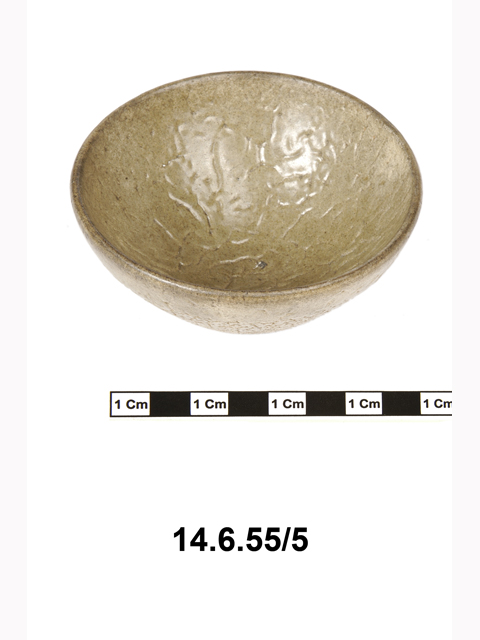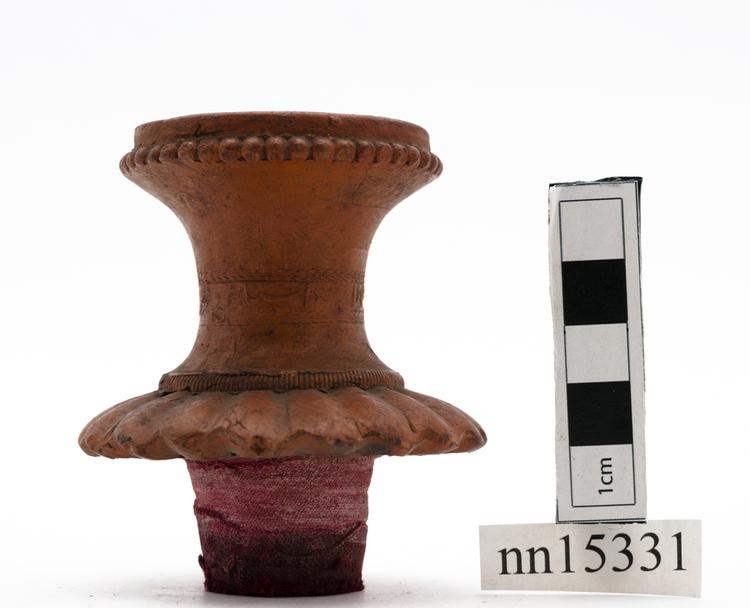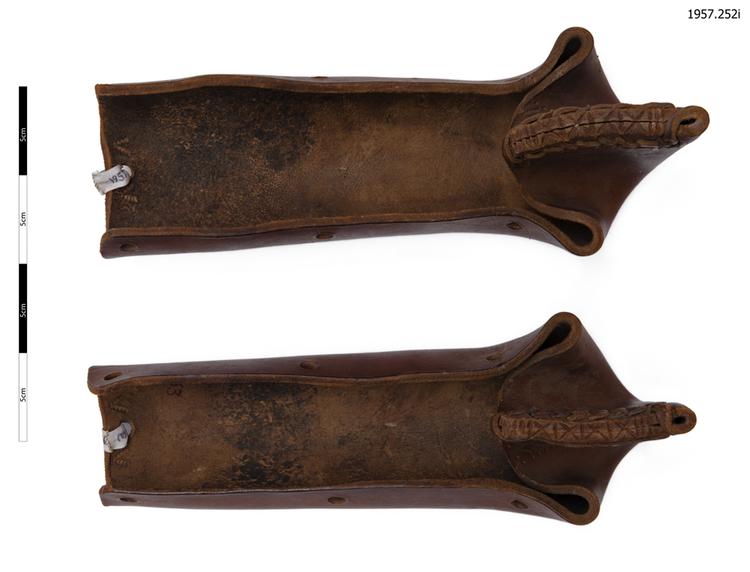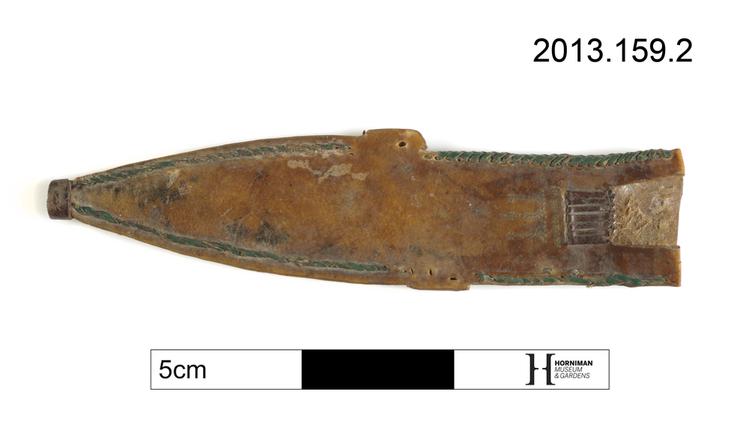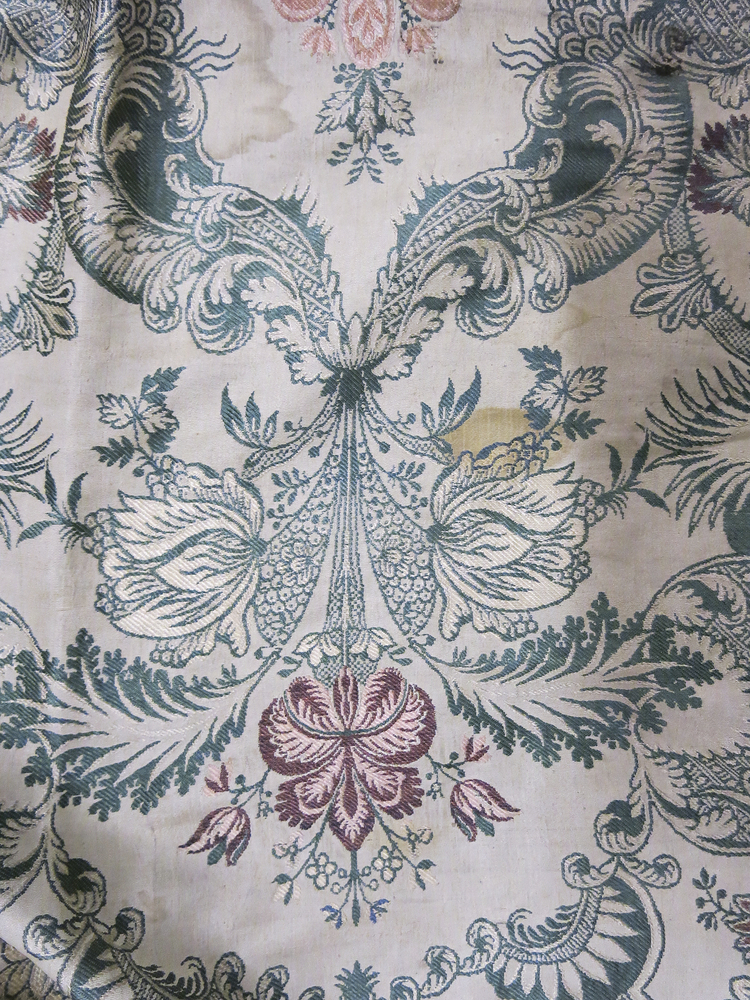
Tailored woman's dress of cream silk fabric with a brocade pattern of stylised flowers and other curvilinear designs, with patterned detailing in pink. It has a narrow waist and full skirt, with frills at the sleeve ends. It is accompanied by a label indicating it is a wedding dress dated circa 1717, presented in 1942 by Miss Sarah Drage. The date 20.8.52 is also indicated, but it is not clear to what this refers.
The silk from which the dress is constructed dates to around 1717. The style of the dress itself dates from the 1770s. It may have been made during this period, or, more likely, was an older dress that was re-styled to fit the current fashions.
The dress is made from a silk dating to about 1717, but its current construction dates to the late 1770s. Examination by an expert such as Susan [North] should reveal if it was re-styled in the late 1770s or made from a pristine length of cloth. The answer is most likely the former. Re-styling silk dresses was very common in the 18th century because the original investment in the silk was considerable. It could easily be a wedding dress, as most women just chose a dress that would work with their existing wardrobes, leading to many coloured dresses being worn. However, I suspect many dresses that were kept originally for another reason have become wedding dresses! Note forwarded by Edwina Eherman from Susan North: 'The construction looks consistent with a late 1770s English-style (tight-back) gown.' Note forwarded by Edwina Ehrman from Clare Browne: 'The silk is lovely, and actually works well for a 1717 date – it’s quite close to Spitalfields designs by James Leman for this date.'



